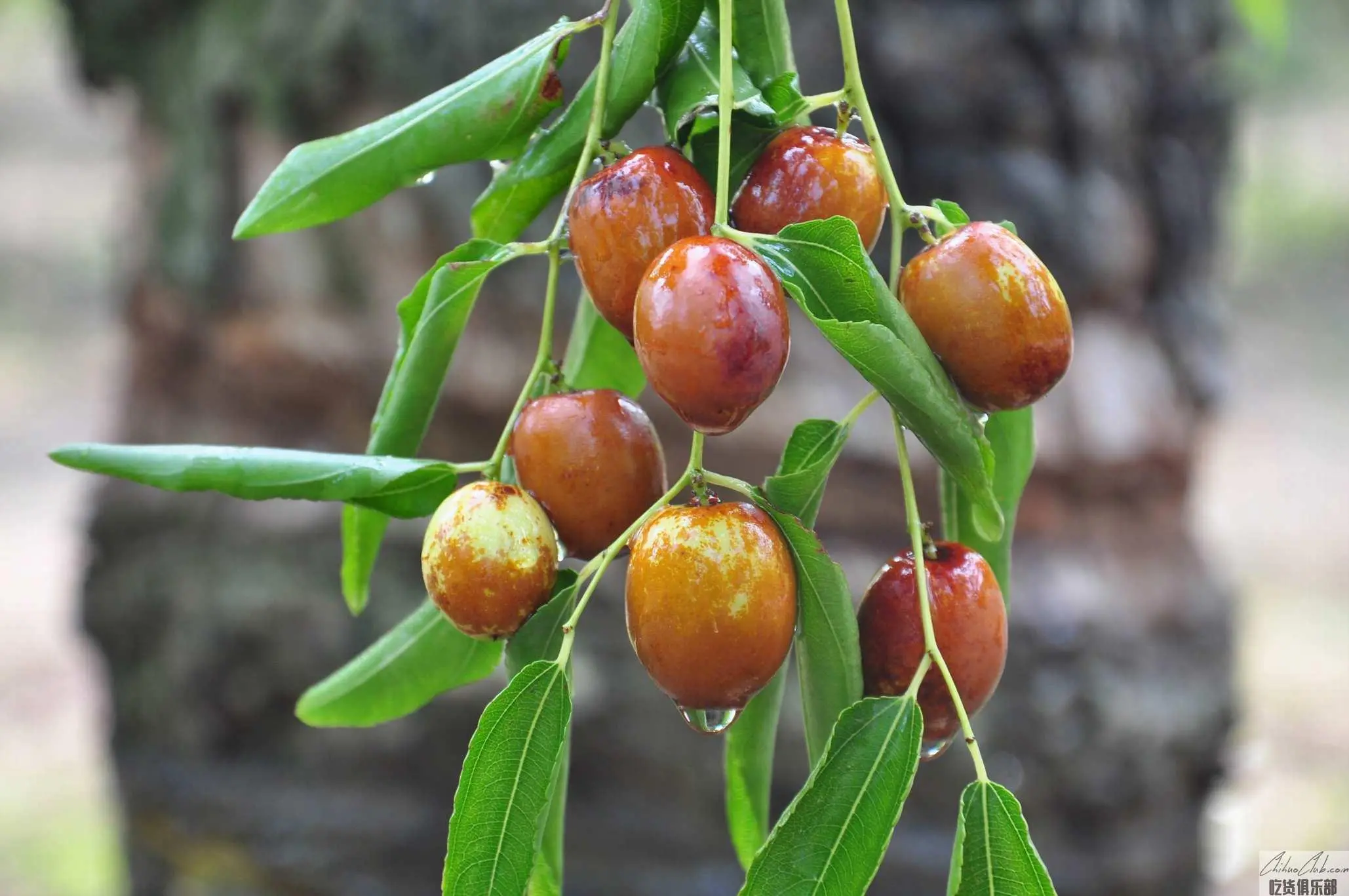
Cangzhou Ziziphus jujuba
-
Update date::
-
Date of protection::
-
Protected range:There are 12 townships (the scope of current jurisdiction) in the administrative area of Chenzhou City, with a total area of 586 square kilometers. They are Huangdipu Township, Gaochuan Township, Cuierzhuang Town, Dusheng Town, Daguan Hall Township, Dulin Township, Datun Village Township, Zhifangtou Township of Qixian County; Qiqiao Town of Botou City; Huaizhen, Gaoguan Township; Jinghe Town of Hejian City.
-
Category:
Quzhou Jinsi jujube has a long history of cultivation. The production area covers the counties of Jixian, Xianxian, Jiaohe, Yanshan and Hejian in the Yinzhou area. It is also known as the main producing area of Zhangzhou Jingerzhuang, and Jixian County has been hailed as the “hometown of golden silk jujube” in China. In the Qing Dynasty, the Emperor Qianlong of the Emperor Qianlong was the royal jujube garden. Since then, Ji Xiaoyu's hometown hundred acres of jujube garden has become the royal jujube garden in the Qing Dynasty.
Quzhou is located in the southeastern part of Hebei Province and belongs to the Heilongjiang River Basin. The soil parent material is river alluvial material. It has formed a large area of river wasteland under the influence of three times of modern Yellow River diversion. After the generations of cultivation, it has formed a deep soily clay soil. According to the "Chuzhou Soil Journal", in the cultivated land of the city, the middle loamy sticky tidal soil accounts for 80%, and the soil of the main producing area of Jinsi jujube belongs to this kind of soil. Its main structure is: the plough layer is the middle soil, the middle of the heart is the middle soil clay, and the upper Panasonic is called “Mengjin soil”, which has good permeability and water and fertilizer retention ability. The soil layer is deep, the physical properties are good, and the nutrient content is high. Especially the content of zinc and iron is higher than other soils. This soil is very suitable for the growth of jujube and the formation of good quality. This is consistent with the results of Guo Yuxin and Wu Zhixin's research, "The roots of Jinsi jujube grown on the middle plastid viscous soil are developed, robust, good quality, high yield and long life." The silk jujube has small crowns, shallow roots, few roots, and weak absorption capacity. It is necessary to manufacture and accumulate sugar-based dry matter in a short period of time. It is necessary to ensure the nutrient strength and capacity of the soil. Satisfy. The second is the climate of Ganzhou. Zhangzhou is adjacent to Bohai Sea in the east, and it is a semi-humid continental monsoon climate zone with warm temperate zone. The precipitation characteristics of “spring drought, summer flood and autumn crane” are conducive to the improvement of jujube quality. The annual average temperature in Zhangzhou is 12.1 °C, the accumulated temperature of ≥0 °C is 4708 °C, the frost-free period is about 210 days, the annual precipitation is 500 mm, and the precipitation in June, July and August is 435 mm, accounting for 75%, and water, light and heat appear simultaneously. The jujube sprouts late, and the spring drought is not serious. From June to August, the jujube branches, leaves, flowers and fruits are formed. The rainfall is high and the light and heat are sufficient. From September to October, the sunshine is sufficient, the rainfall is small, and the temperature difference between day and night is large. Cracked fruit and smashed pulp are beneficial to the accumulation, coloration and quality of jujube fructose. Therefore, the remarkable characteristics of the thin, thick meat, small nuclear and red color of the golden silk jujube in Cangzhou are formed. Quzhou Jinsi jujube fresh jujube contains 24 grams of sugar per 100 grams of fruit, 600 mg of vitamin C, 3,385 mg of vitamin P, 0.2 g of fat, 1.2 g of protein, 1.6 g of crude fiber, 41 mg of calcium, 23 mg of phosphorus, and 0.5 of iron. Mg. Dried dates contain 73.48% total sugar, 2.48% protein, 0.42% total acid, 10.9 mg/Kg iron, 175 mg/Kg calcium, 251 mg/Kg magnesium, 1.4 mg/Kg zinc, 0.023% phosphorus, 3600 mg/Kg potassium. , vitamin C 26mg/100g. It is also rich in health-care cyclic adenosine monophosphate and cyclic guanosine monophosphate (which has been successfully extracted and tried in clinical practice).
Technical requirements for quality of Jinzhou jujube (1) Jinsi jujube varieties: Jinsifeng, Jinsi honey, non-nuclear red and the approved varieties of Zhangzhou Jinsi jujube. (2) Soil conditions: The soil layer is deep and fertile in the middle loamy sticky soil, with a pH of 7.5-8.5. (3) Cultivation management: 1. Breeding of seedlings: Grafting of excellent mother trees such as “Jin Si Feng”, “Golden Silk Honey” and “Nuclear Red”. 2. 3. Fertilization: The amount of organic fertilizer applied is applied according to the amount of fertilizer. 4. Flower and fruit management and pruning: open at 30%? 50% jujube. Trimming, cultivating ventilation, light transmission, and a good tree shape with appropriate branches. (4) Harvesting and drying of dried jujube fruit: After completion, it is harvested by the shaking method, and dried according to a specific method. When the water content reaches 28%, it can be used. (5) Harvest of fresh jujube fruit: hand-picked in the crisp ripening period. (6) Quality characteristics: 1. Sensory characteristics: dried jujube fruit is deep red or purple, the skin is thin and tough, the flesh is thick and elastic, smooth and sweet. The fresh jujube peel is light brown red, and the fruit surface is smooth and tough. The flesh of the flesh is slightly greenish and sweet and slightly sour. 2.